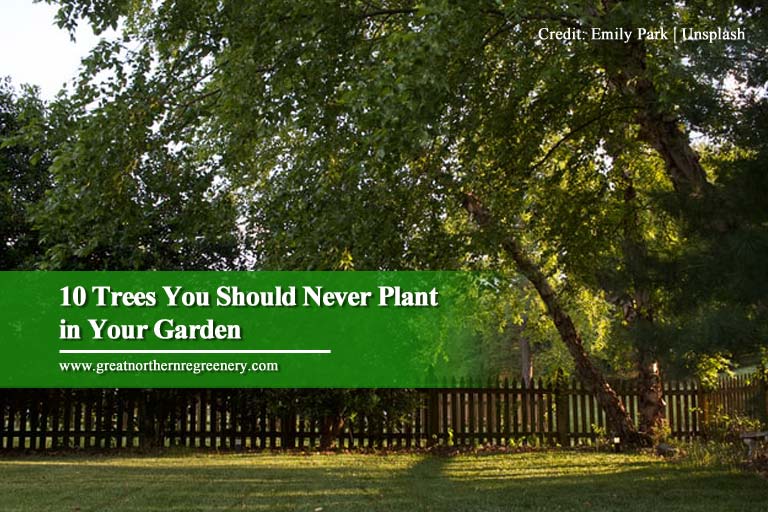
Trees are a good addition to your yard. They can add shade, privacy, and beauty wherever they are planted. The right fruit-bearing plants may even be a quick source of food. Having good trees planted near your house isn’t something only you can enjoy. Birds and other animals may find shelter in them too.
How Certain Trees Can Harm Your Garden
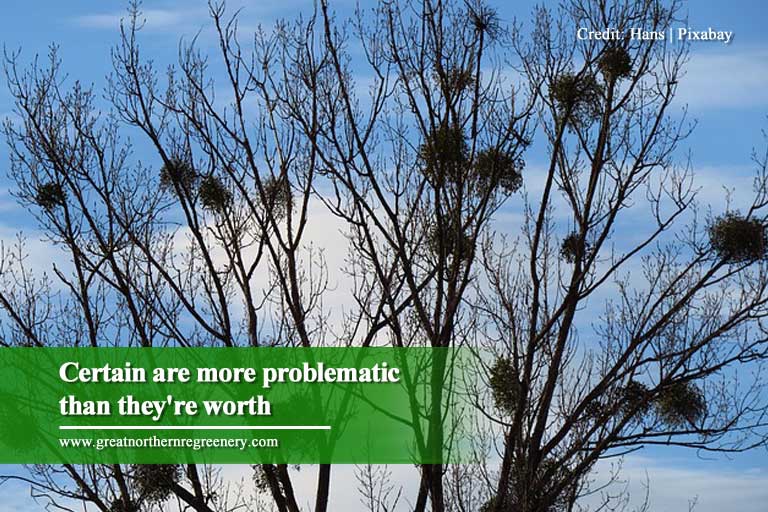
However, while trees are a good idea in general, planting them shouldn’t be done in haste. Careful planning and preparation must be conducted for your tree to thrive and reduce unexpected consequences. In fact, there are trees that you should think twice about planting in your garden for the following reasons:
- The tree leaves a mess
Trees naturally shed off leaves and barks. However, these are not the only things trees can drop. They can also shed fruits, berries, and seed pods that can make a huge mess in your yard every year. Raking and cleaning them can be quite exhausting so it is best to avoid messy trees altogether. - The tree is vulnerable to pests and diseases
It is no surprise that some trees are more susceptible to pests and diseases than others. Planting them in your garden can place other plants at risk of these pests and diseases. - The tree is brittle and prone to damage
Some trees are naturally weak, making them prone to breaking from strong winds or heavy snow. Branches falling off can damage anything below them, or hurt people staying underneath. - The tree roots have high water-seeking tendencies
Tree roots are often reported as one of the major causes of plumbing issues. “Thirsty” trees will seek out wherever the water is, eventually finding their way into your pipes and septic tanks. When these happen, you might need to shell out a significant amount of money to have roots removed and your fixtures repaired. - The tree has dense shade
While shade is good for people and some plants. However, trees with an extremely thick canopy can block sunlight from grass and other plants under their shade. - The species can cause allergies
Some plants produce large quantities of pollen, which can aggravate allergies. Those who are sensitive to pollen need to keep flower plants from their garden to avoid allergic reactions in the spring. - Some trees affect the soil
Certain trees can have an impact on the soil. A water-thirsty tree, for example, will prevent others from getting the resource they need. Some trees, such as pine trees and black walnut, can make the soil acidic or toxic, killing other plants around them.
Trees to Avoid
As you prepare to plant, be mindful of these less-than-desirable tree varieties. Here are some trees you should not plant in your property.
1.Red Oak
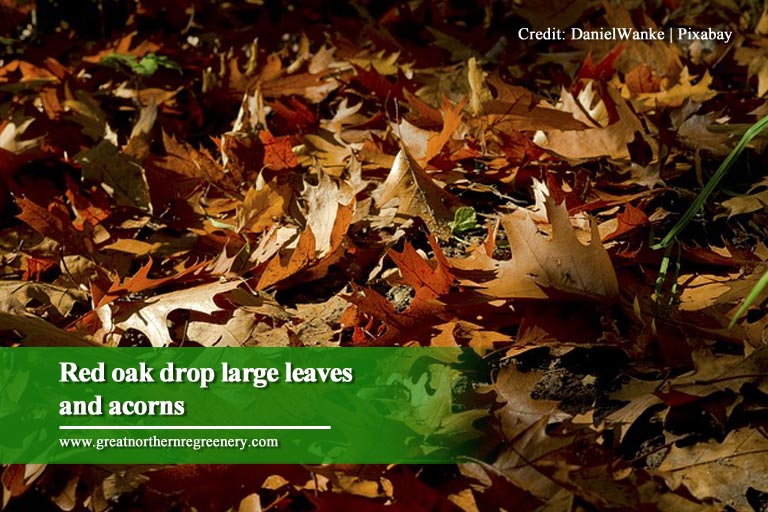
Red oak is one messy tree. They drop large leaves and acorns in autumn. If you place your car underneath its shade, acorns falling from a high enough branch can put a small dent in your car.
Red oak also sheds a massive volume of catkins, small clusters of pollen-bearing flowers. Catkins can trigger allergies, and if they collect in your car, can also damage electrical components of your vehicle.
2.Sweetgum Trees
Sweetgum Trees are known for their lovely fall colour. The tree is aptly named after its messy seed pods or “gumballs.” These seedpods are round, hard, and spiky. So, if you happen to have sweetgum in your yard, forget walking around barefoot during autumn and winter if you don’t want to step on one.
3.Bradford Pear
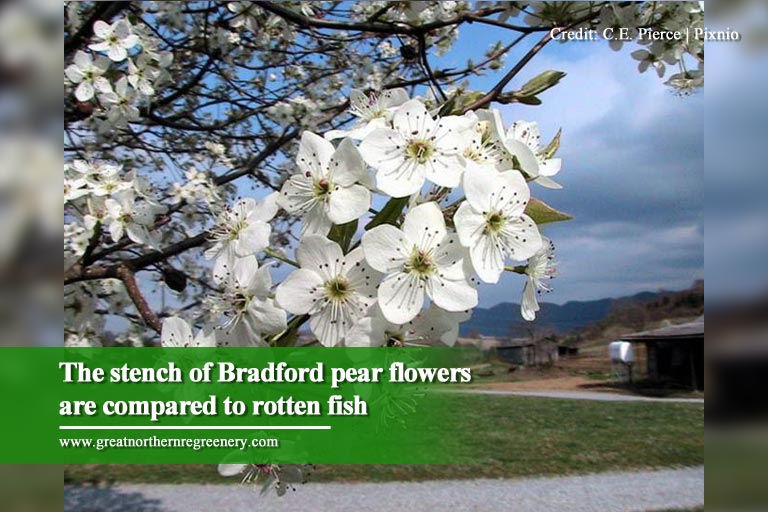
Bradford pear is extremely attractive to developers because of its ability to grow quickly and provide shade. The tree produces beautiful white flowers during spring and gorgeous foliage in fall. However, Bradford pear is known for its particularly fragile branches. During winter, snow and ice accumulating on the branches can easily break them.
Also, this species’ beautiful flowers produce smelly flowers. In many areas, Bradford pear has a reputation for being an invasive weed.
4.Lombardy Poplar
Lombardy Poplar is a fast-growing tree and can make an excellent windbreaker. Its shape and size make it a good privacy tree. Unfortunately, Lombardy poplar is also susceptible to a number of pests and diseases, turning these magnificent plants into a bit of an eyesore in a short period of time. Its roots are invasive and difficult to get rid of.
5.Ginkgo biloba
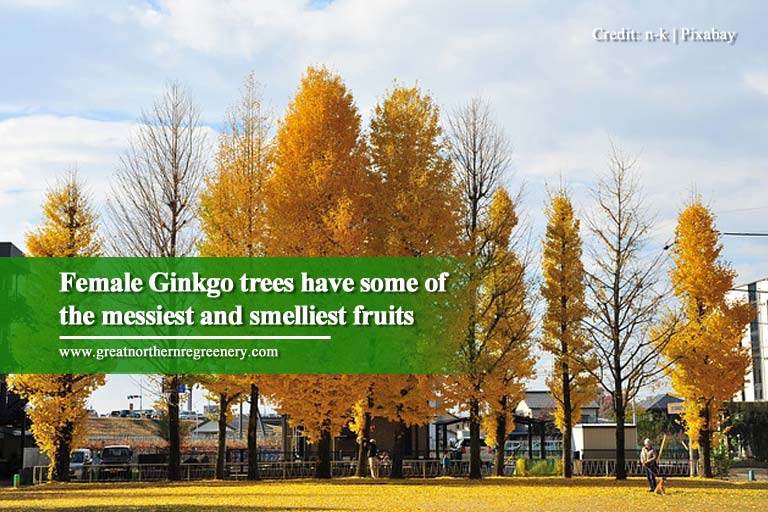
Ginkgo trees are beautiful, hardy in various climates, and usually a fine choice for gardens — as long as you don’t plant female ginkgo trees. The female variety has some of the messiest and smelliest fruits of any tree. So much so that it is called a “trash tree” in some places.
6.Eucalyptus
Eucalyptus is native to Australia but was heavily imported due to its rapid growth rate. Unfortunately, this comes at a cost. These trees are a maintenance nightmare. It seasonally sheds bark, and its large sticky branches are infamous for suddenly breaking off and falling to the ground. Not only that, Eucalyptus contains oil that is highly flammable and is considered a fire hazard by many tree experts.
7.Mulberry
Mulberries are amazing shade trees. However, because of their thick canopy, grass and other plants beneath them will have no chance of surviving. It also has shallow yet aggressive roots that can crack pavements and upend landscaping fixtures. Mulberry can be messy and invasive, as well. Its male variety emits pollen, triggering allergies.
8.Weeping Willow
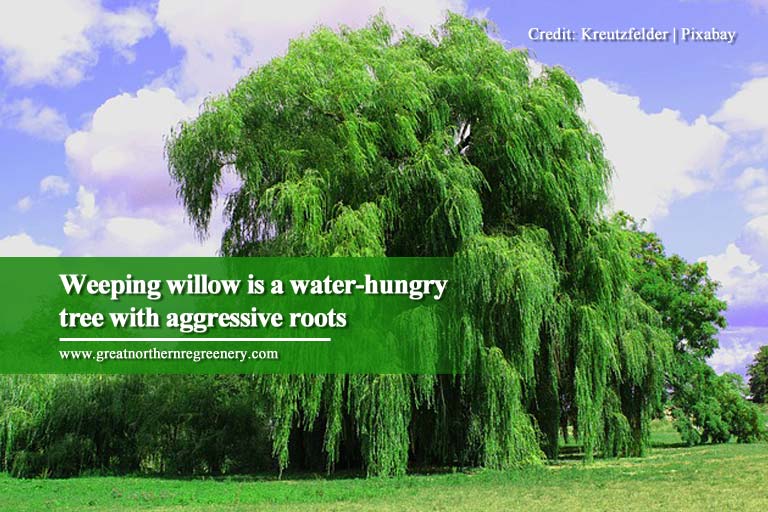
The weeping willow is beautiful on the outside, but it’s another example of a tree having an aggressive and strong root system. Willows are also water-hungry. These characteristics make it notorious for cracking pavements and destroying pipes and sewer lines. The lifespan of the tree is also rather short, only about 30 years. Its wood grows weaker as it matures, making it a hazard.
9.Silver Maple
Silver maple is a large, fast-growing, and great shade-producing tree. Unfortunately, it has weak wood, making it problematic during storms and wind. Its shallow roots system also tends to seek moist environments, such as pipes and sewers, tearing up your yard and plumbing in the process.
10.Mimosa
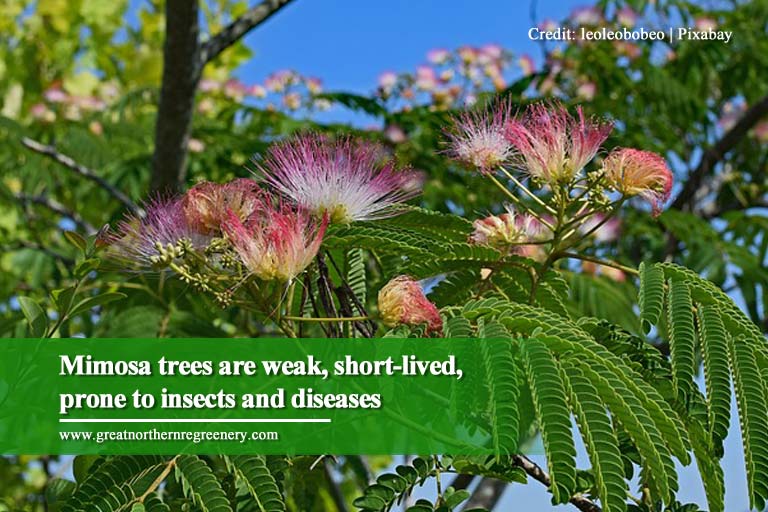
Mimosas have beautiful, frilly leaves and puffy, pink flowers. But that’s just about it with this tree. It is weak-wooded, short-lived, prone to insects and diseases, and has invasive roots. It might as well be one of the worst trees to plant on your property.
Mimosas also produce a high number of seedlings, which can spread far and wide, making it unpopular among neighbours.
Choosing a tree for your backyard shouldn’t be all about shape and appearance but about its overall qualities. Luckily, there are better alternatives to many of these undesirable plant species. Planting a tree is an investment, and you shouldn’t put yourself at risk simply because of selecting the wrong tree species.
For quality tree service — disease control, protective pruning, stump grinding, pest control — Great Northern ReGreenery is your local tree arborist. Call our toll-free hotline at 1-877-775-7444.
We look forward to solving your tree problems and making your canopy beautiful, healthy, and safe!





